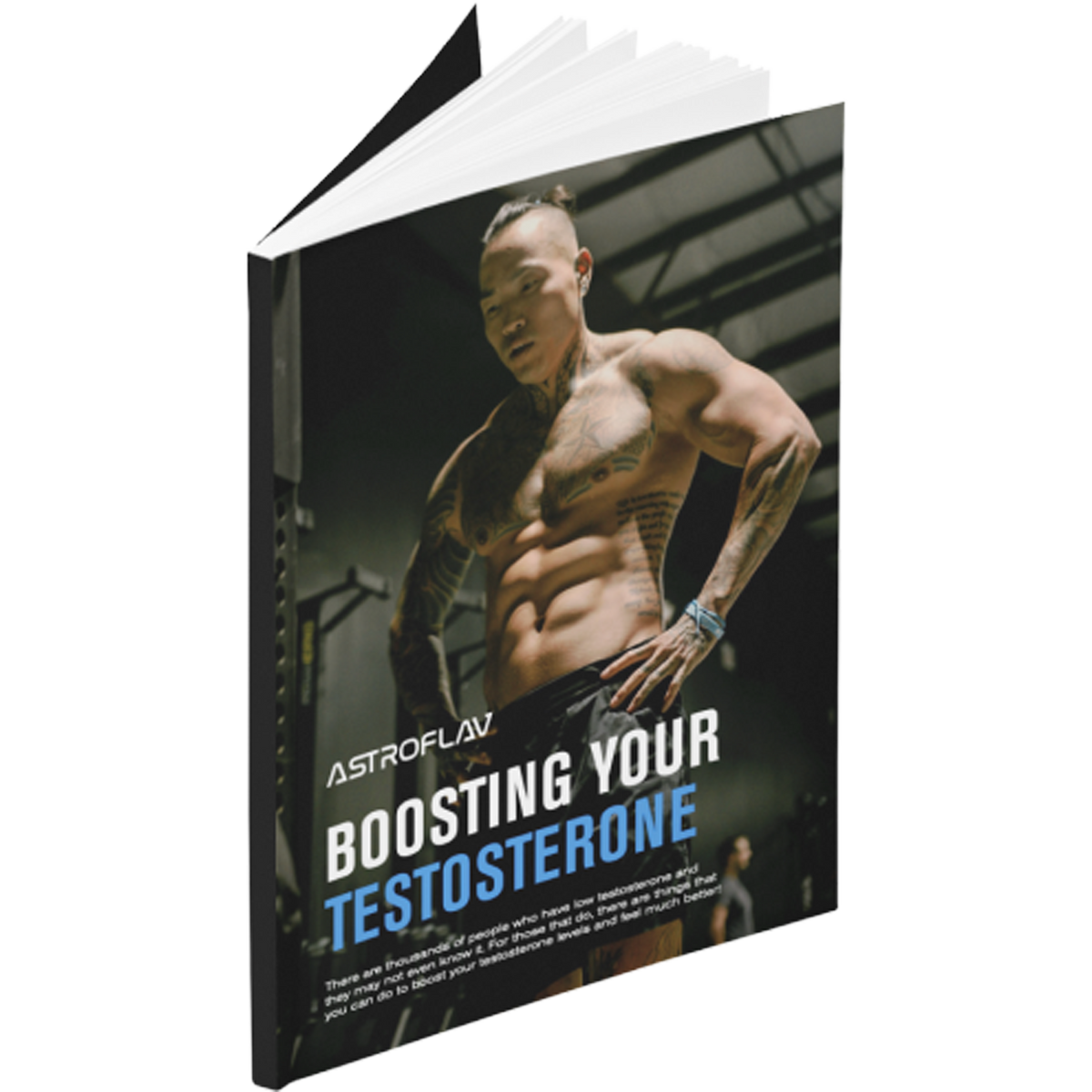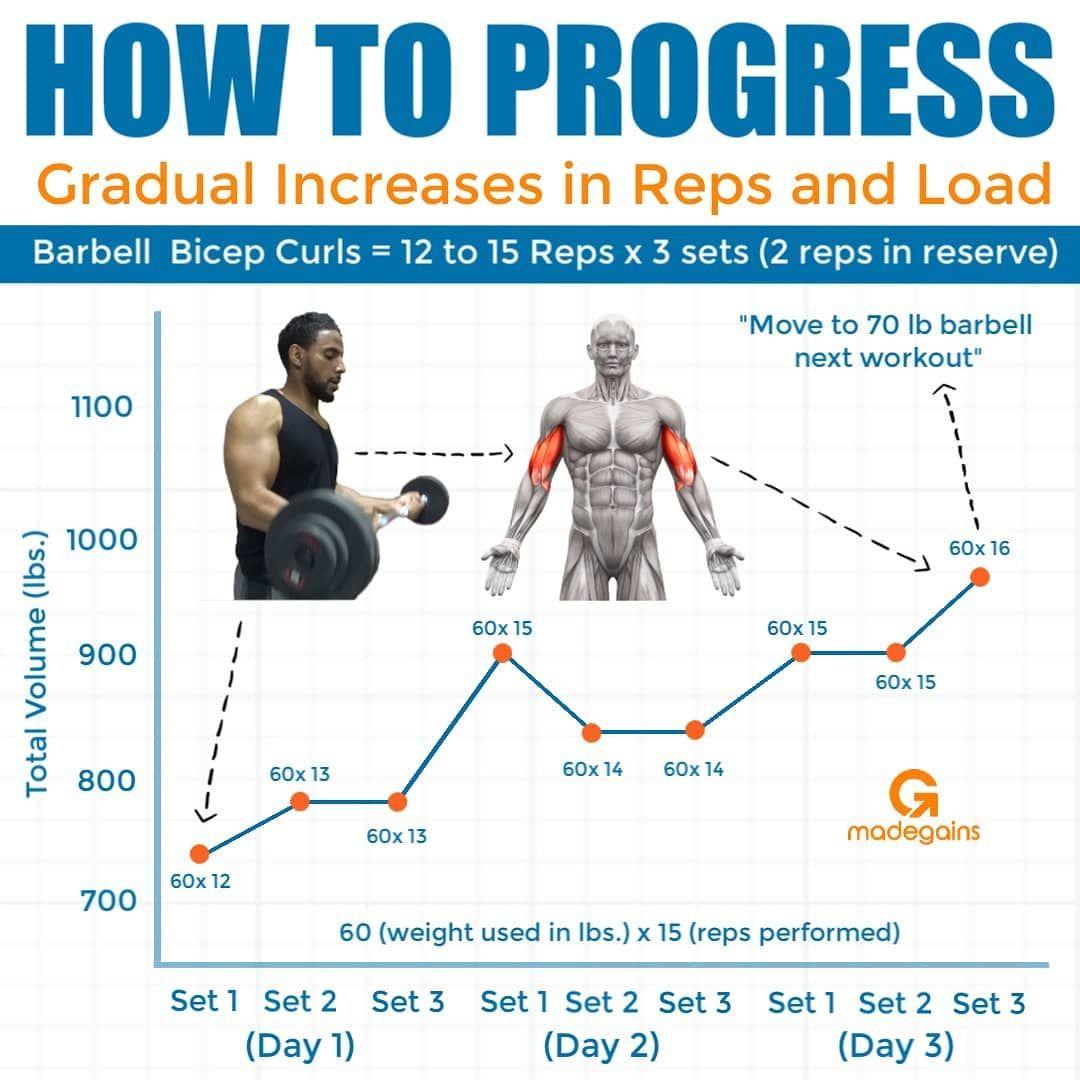Progressive Overload
What is it & How to Use It for Muscle Gains
One of the greatest reasons to why we don't do something new is simply out of fear. Fear can hold us back from taking the next step, moving to a new city, and even pushing heavier weight in the gym. Have you ever heard the phrase, "If nothing changes, nothing changes?" In correlation with weight training, if the weight doesn't increase and the reps don't change, nothing is changing. Today's article talks all about progressive overload training, what it is, and how to incorporate it into training properly.
Keep reading to learn how to implement progressive overload training into your lifting regimen!
What is Progressive Overload?
Progressive overload is a concept within the weight lifting aura of which you are to consistently increase the demands placed on your body over the time that goes on. The principle of adaptation comes into play when the body is forced to adapt to the weight and/or increased weight overtime. This is essentially how we begin to make progress and "gains" after a consistent work in the gym.
To put progressive overload more into perspective, say you begin benching with just the 45 lbs bar. Then, the next week, you add 10 lbs and/or 25 lbs to the bar. You have essentially progressed forward by increasing the weight rather than going back by decreasing the load.
Progressive overload can be done in many ways than just increasing weight. The amount of volume, resistance, reps, and endurance can all be ways to perform progressive overload.
In this article, we share the benefits of progressive overload training, proper time to use progressive overload, and even the few "cons" there are to training this way!
Benefits of Progressive Overload Training:
As previously mentioned, one of the important factors of progressive overload is the idea of muscle adaptation. Muscle adaptation happens when the overall intensity of your workouts are increasing, forcing the body to adapt to new training conditions, thus allowing for consistent progress.
Additionally, progressive overload is a way of training to avoid a lifting plateau. The same type of workouts, using the same amount of weight may not be challenging to the individual, and further results may not be seen.
By challenging your body and pushing it hard enough (avoiding injury of course), progress and results are made. Also, who doesn't love seeing that number of weight increase and the number of reps go up?!
When Should You Use Progressive Overload?
So, when is a good time to incorporate progressive overload training? First thing to note is that the best way to go about progressive overload training is to strategically plan. This prevents the person from increasing the weight or intensity too quickly, where an unexpected injury could occur.
When writing up a plan, using progressive overload as the object, it is important to take in account genetics, nutrition, body weight, lifting records, etc. The most common periodization method would be to schedule progressions every 2-4 weeks. This will allow the person to recover and adapt to the load and intensity before progressing too fast, too soon.
Another rule of thumb is to aim to keep increases in time, weight, and intensity to 10% or less each week.
With respect to hypertrophy training, increasing the set volume from 3, to 4 or 5 sets over time, you can challenge your strength endurance by pushing until failure.
Progressive Overload Examples:
It is important to keep in mind that progressive overload does not always have to be achieved by just increasing the weight. Progressive overload can be done by increasing the resistance, number of sets/reps, and duration of the workout.
Here a few variables you can adjust in your training to achieve progressive overload:
Increasing the weight overtime.
Increasing training frequency from 3x times a week, to 5-6x times a week.
Increase the set range from 3, to 4 or 5.
Increase the rep range from 8-10, to 12-15.
Increase the duration of the set or run
Incorporate drop sets.
Increase the speed of movement (tempo training).
Below are ways in which you can achieve progressive overload in your preferred style of training.
Increasing the Resistance
The most common way to achieve progressive overload is by increasing the resistance. If your main goal is to gain strength, then the weight that you push should be the targeted variable to increase.
This is where muscle adaptation comes into play. Your body is forced to adapt to heavier weight as it is getting stronger. With progressive overload, as time goes on, your body is better equipped to handle a greater amount of stress (resistance). Increasing the amount of resistance by 10% each week allows for realistic adaptations, while avoiding injury.
Increasing the Sets & Reps
Increasing sets and reps overtime is another way that progressive overload can be achieved. The chart to the right is a great example of how to progress in weight training by increasing reps and sets.
An example of what this would look like would be:
Week 1: Perform 3 sets of 8 reps.
Week 3: Perform 4 sets of 10 reps.
-
Week 6: Perform 4 sets of 12 reps.
In addition, increasing the sets and reps allows the body to improve muscle endurance.
Not sure where to start with your set and rep range? A good way to play it safe would be to start with 3-4 sets of an exercise and adjust where is needed.
Increasing Muscular or Cardiovascular Duration (Endurance):
So, say you want to incorporate progressive overload training, but you are not looking to lift past comfort. That's okay! You can still achieve progressive overload by training in a way that stresses your endurance. If a person's style of exercise is cardiovascular training, they can aim to increase the duration and length of their training sessions.
This is done by gradually increasing the duration of the time spent completing an exercise. (I.e. You begin with a 1 minute plank and work your time up 30 seconds by 30 seconds each training session and are now up to a 5 minute plank within 4 weeks).
The same goes for duration and mileage time. For example, if the exercise is running, swimming, or cycle, adding an additional 10-15 minutes weekly is a good rule of thumb to gradually progress.
An example of what this would look like would be:
Week 1: Perform a 30 minute session.
Week 3: Perform a 45 minute session.
Week 6: Perform a 50-60 minute session.
Are There Any Cons to Progressive Overload Training?
Although there are many benefits to progressive overload training, the one "con" to keep in mind is that this style of training may allow for injury if not done properly and strategically planned. This is because increasing weight and/or reps too quickly can put an exceeded amount of force on your body before it is ready.
All that being said, there are many ways to decrease the chance of injury with progressive overload training. A few examples are:
Focusing on proper form and lifting techniques.
Warming up properly before each workout.
Stretching/cooling down after each session.
Avoiding increasing the intensity too quickly each week.
Prioritize rest days.
SUMMARY:
Progressive overload is a great technique to incorporate into your weight lifting routine. This style of training uses a gradual progression in weight, set/rep range, and endurance overtime to progress in your training and start seeing results! Progressive overload training is very beneficial with respect to avoiding a training plateau as well as a continuous motivator to push heavier as time goes on!
Progressive overload does come with a chance for potential injury if not done properly, so it is important to strategically plan and start at a place where the body is comfortable and then you can work up from there!
At AstroFlav, we want the best for our customers. It is our goal to help everyone achieve their fitness goals and steer them in the right direction with trust-worthy advice AND trust-worthy supplements!
AstroFlav Whey IsoMix
★★★★★ "This is one of my favorite protein that I have ever taken. The quality is noticeable and I crave the protein like it is a cheat meal. Best protein period."
-Lyndon P., IsoMix Customer
IsoMix's™ whey protein isolate comes in amazing flavors that will satisfy your inner child while helping you stay healthy without all the guilt!
Easy mixing in less than 60 seconds!
Out Of This World Flavor!
Minimal sugar & carbs!
An ideal protein for any low-carb diet!
PLUS...
Gives Your Body More Nutrition In Less Time Than It Takes To Order A Cup Of Coffee
Makes It Easy To Achieve All Your Goals Whether It's Losing, Maintaining, Or Gaining
Avoid The Cravings You Get For Unhealthy Treats
How To Make Progress Faster By Fueling Your Body With The Best Tasting Nutrition Available
You can use IsoMix to ignite your childhood nostalgia at any time of day. It’s a fantastic way to fuel your body, giving you the satisfaction & nutrition you deserve.
AstroFlav Whey IsoMix
★★★★★ "This is one of my favorite protein that I have ever taken. The quality is noticeable and I crave the protein like it is a cheat meal. Best protein period."
-Lyndon P., IsoMix Customer
IsoMix's™ whey protein isolate comes in amazing flavors that will satisfy your inner child while helping you stay healthy without all the guilt!
Easy mixing in less than 60 seconds!
Out Of This World Flavor!
Minimal sugar & carbs!
An ideal protein for any low-carb diet!
PLUS...
Gives Your Body More Nutrition In Less Time Than It Takes To Order A Cup Of Coffee
Makes It Easy To Achieve All Your Goals Whether It's Losing, Maintaining, Or Gaining
Avoid The Cravings You Get For Unhealthy Treats
How To Make Progress Faster By Fueling Your Body With The Best Tasting Nutrition Available
You can use IsoMix to ignite your childhood nostalgia at any time of day. It’s a fantastic way to fuel your body, giving you the satisfaction & nutrition you deserve.
Have you tried our new Strawberry IsoMix?
We want to know what you think!
Share your story with daynapembroke@astroflav.com to be featured in our Facebook community.
Join our family for new videos, discount codes, and more!








